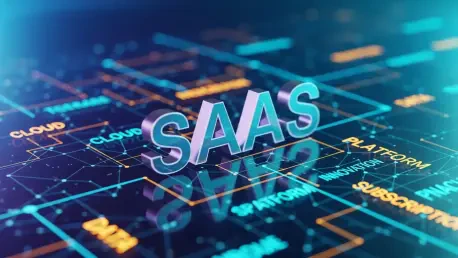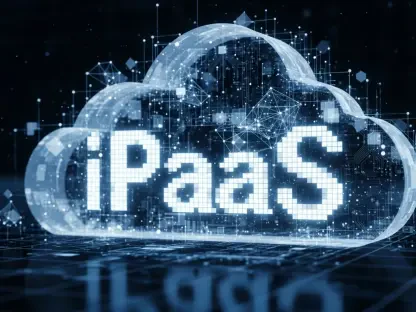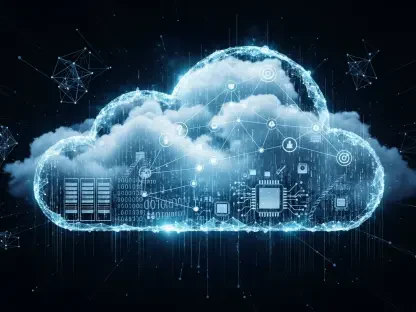Understanding SaaS pricing models can be complex, but Vijay Raina offers expert insights into metered billing—a dynamic pricing approach that is gaining momentum. As a thought leader in SaaS technologies, Vijay reveals how this model caters to varied customer needs, supports revenue growth, and enhances customer retention. Dive into the mechanics of metered billing, the importance of effective metrics, and how businesses can make the most of this flexible pricing strategy.
What is metered billing, and how does it differ from traditional fixed-fee billing models?
Metered billing charges customers based on their actual usage rather than a preset fee. Unlike traditional models where charges are fixed, metered billing reflects real customer interactions with the product. This can mean billing based on the number of API calls made, data storage used, or any other measurable activity. Essentially, it aligns with how and how often the customer uses the service, making it more adaptable to varied usage patterns compared to rigid, fixed-fee models.
How does metered billing align with the way customers typically use SaaS products?
Metered billing aligns with SaaS usage patterns by billing customers for the specific services they consume. SaaS products are often used variably; some customers may need more resources at different times. Metered billing accommodates these fluctuations, ensuring that customers pay only for what they use, which can enhance satisfaction and perceived value.
Can you explain the basic components of how a metered billing system operates?
A metered billing system operates through a multi-step process: capturing real-time usage data, processing it through defined pricing logic, and generating invoices based on actual usage. The system relies on components like metric tracking systems, billing logic, rate management, and customer visibility tools to compile and communicate usage data accurately and transparently.
What is a usage metric, and why is choosing the right metric important in metered billing?
A usage metric is a specific parameter that determines billing, like the number of API requests or the amount of data stored. Choosing the right metric is crucial because it directly links usage with costs, impacting how customers perceive value. The metric should reflect the core value delivered by the product and align with user behavior to ensure fair and understandable pricing.
How does a metric tracking system function within a metered billing setup?
A metric tracking system records and logs each relevant event as customers interact with the product. This real-time data collection ensures that every aspect of usage is captured accurately, allowing for precise billing that reflects true consumption. The system stores the data so it can be processed later to apply billing logic and create invoices.
What role does billing logic and rate management play in a metered billing system?
Billing logic and rate management apply pricing rules to the collected usage data, translating raw metrics into billable amounts. The system can accommodate various pricing structures, such as per-unit pricing or tiered thresholds, to calculate charges accurately based on how much of a service the customer uses.
How do customer visibility tools enhance the metered billing experience for users?
Customer visibility tools, like usage summaries and real-time dashboards, provide customers with an immediate understanding of their usage. These tools reduce billing surprises and improve satisfaction by making charges transparent and easy to understand. They empower customers to monitor their consumption, aligning costs closely with actual use.
What are adjustment and notification systems, and how do they contribute to metered billing?
Adjustment and notification systems handle alerts, corrections, and credits for billing issues. They ensure that users are promptly informed about any changes in their billing, such as reaching usage limits. By maintaining open and clear communication, these systems help resolve potential disputes swiftly and enhance overall trust in the billing process.
What are some of the key benefits of adopting a metered billing model for businesses?
Metered billing offers several benefits, including increased revenue potential as usage grows without the need for frequent upgrades, improved customer retention through aligned value and pricing, and reduced friction during onboarding. This model adapts to diverse customer needs, allowing businesses to serve both low and high usage accounts efficiently.
How does metered billing support revenue growth through increased usage?
With metered billing, revenue correlates directly with the level of product engagement. As customers use more of a service, their bill naturally increases, driving organic revenue growth. This model incentivizes companies to focus on features that boost usage, supporting sustainable long-term growth.
In what ways does metered billing help minimize customer churn and improve retention?
By aligning pricing with usage, metered billing reduces the likelihood of customers leaving due to feeling overcharged during low-usage periods. It allows customers to adjust their consumption pattern without abandoning the service, enabling them to scale back usage during slow periods and ramp up when necessary, promoting customer loyalty.
How does the flexibility of metered billing reduce friction during customer onboarding?
Metered billing lowers entry barriers by eliminating high upfront costs and rigid plans, allowing new users to try the service with lower financial commitment. This flexibility makes it easier for startups and companies to adopt the product at their own pace, enhancing the chances of long-term engagement.
Can you give examples of how metered billing caters to a wide range of customer needs?
Metered billing adapts to different customer scales, serving everything from small startups to large enterprises. For example, a small business might pay for minimal data usage while a larger organization benefits from the ability to scale its subscription seamlessly as usage demands grow, all without needing customized plans.
Could you provide some examples of usage-based pricing strategies utilized in SaaS models?
Common strategies include charging by the number of emails sent in email marketing tools, API calls for developer services, storage capacity for cloud services, or support interactions for help desks. For instance, an API service might bill a user based on how many requests they make, scaling the charges with their app’s activity level.
What are the best practices for setting up a successful metered billing system?
Successful implementation requires choosing the right metrics that reflect product value, ensuring real-time usage tracking, testing various billing scenarios before going live, and maintaining transparent communication with customers. These steps help create a smooth experience and build trust with users, making billing predictable and accurate.
Why is it crucial to choose the right usage metrics in metered billing?
The right metrics ensure customers understand and accept billing, as they connect directly to how customers derive value from the product. A well-chosen metric prevents disputes over charges and aligns costs with customer outcomes, fostering satisfaction and trust in the billing system.
How does real-time usage tracking benefit both businesses and customers?
Real-time usage tracking helps businesses address issues instantaneously, enhancing billing accuracy and preventing potential disputes. For customers, real-time updates provide transparency and control over their usage, reducing surprises and promoting trust by letting them see exactly what they are paying for at any time.
Why is it important to test billing scenarios before implementing a metered billing model?
Testing assures that the billing system functions properly across a range of real-world usage scenarios. This preemptively identifies potential errors or misalignments in pricing logic, ensuring accurate charges and equipping customer support to handle inquiries effectively, which contributes to a smoother customer experience.
What methods are effective for ensuring transparent communication with customers about metered billing?
Effective communication can be achieved through detailed dashboards, timely alerts, and comprehensive support documents that explain the billing process. Proactively sharing how billing metrics are calculated and providing regular updates on usage helps eliminate confusion and aligns customer expectations with reality.
What considerations should businesses evaluate when switching to metered billing?
Businesses need to establish robust tracking infrastructure and assess customer reactions to a shift from flat rates to usage-based billing. They should also prepare internal teams for new customer questions and ensure their systems can handle the nuances of this flexible and transparent model.
How can the transition to metered billing impact customer perception of value and pricing?
The transition to metered billing can enhance the perception of value as customers directly correlate costs with usage, gaining transparency and trust. However, businesses need to communicate clearly and manage the change to avoid any negative feedback, especially from customers who prefer predictable pricing models.









